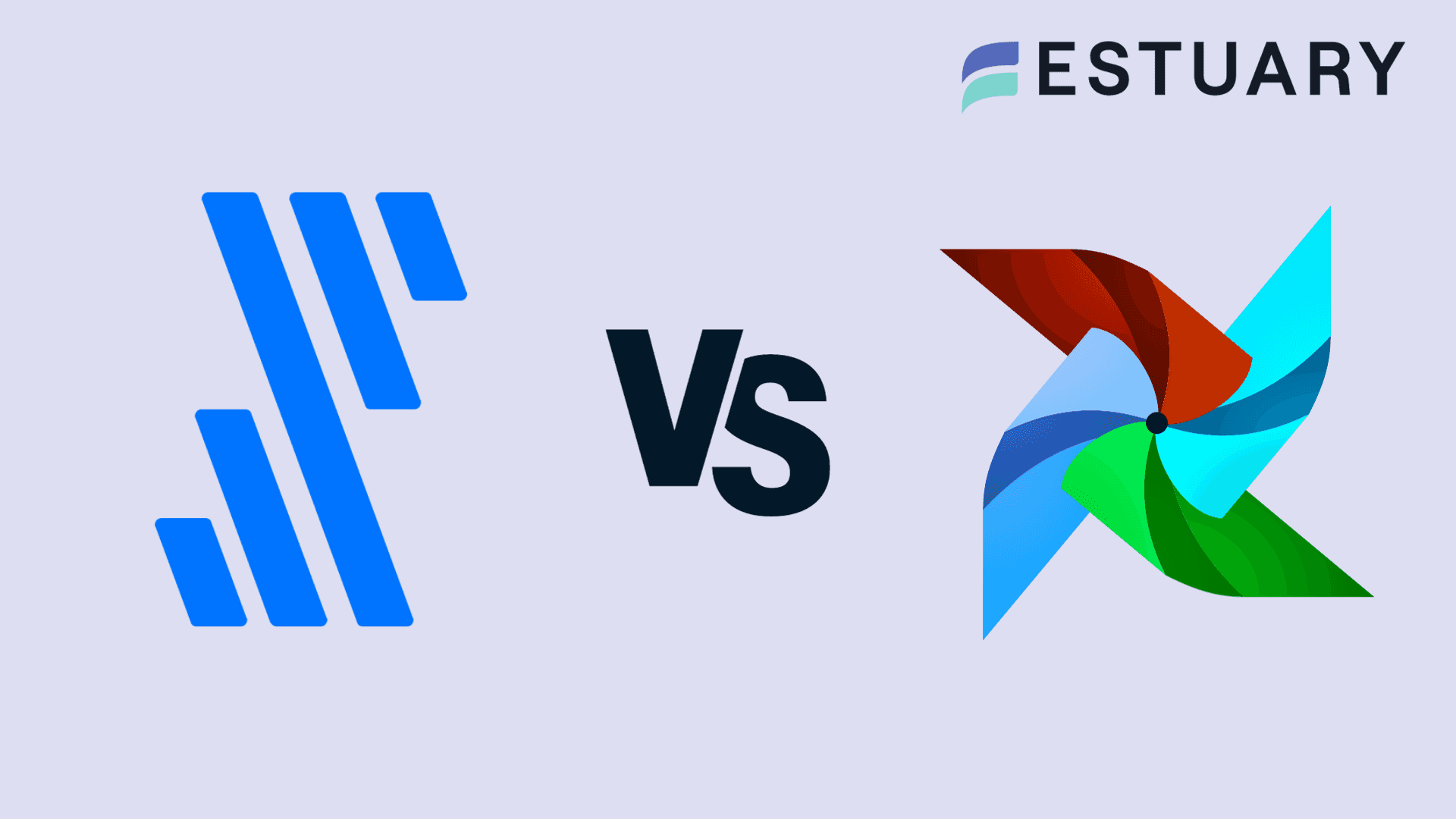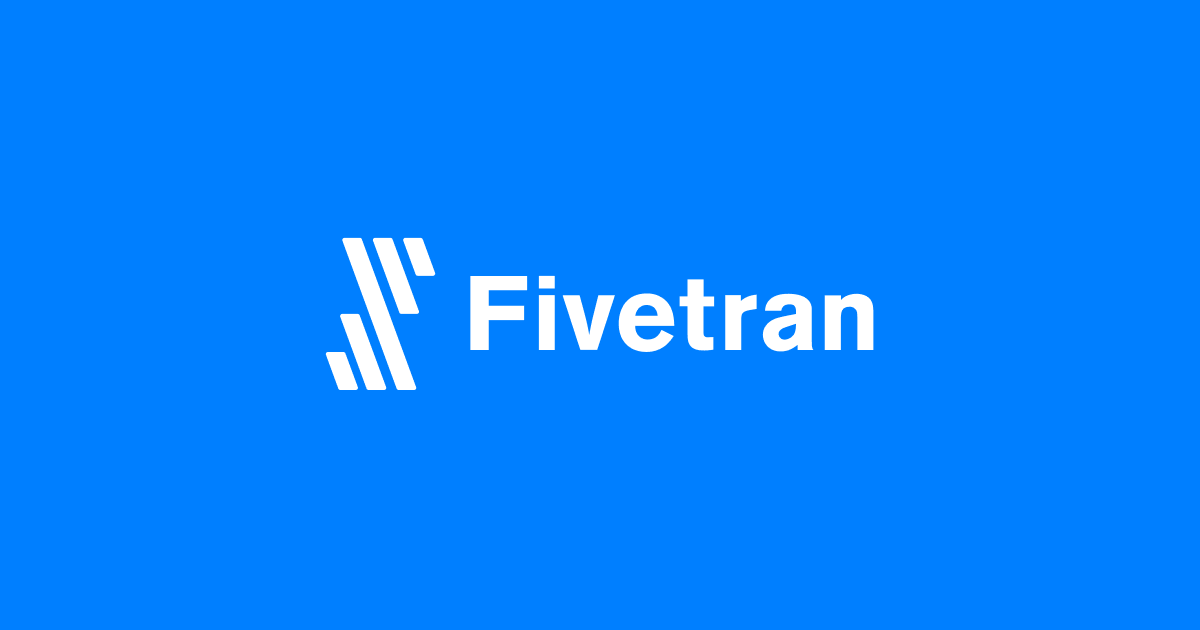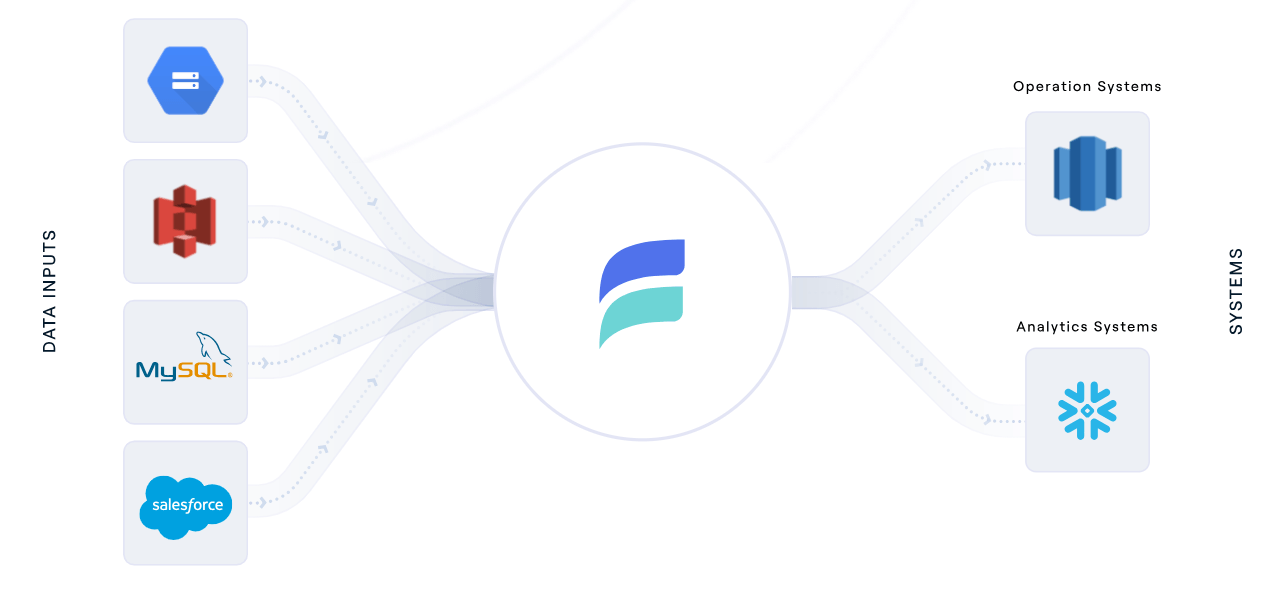
Fivetran vs. Airflow: An In-Depth Guide to Choosing Your ELT or ETL Solution
Explore the difference between Fivetran and Airflow for data integration and workflow management. Uncover their distinct connectors, customizations, security, and compliance features for optimizing your integration needs.

Effective data management is crucial in today’s data-driven landscape, with organizations facing an ever-increasing demand for streamlined processes. Among these challenges, handling data management tasks like ETL (Extract, Transform, Load) and workflow management can be challenging for organizations. Fortunately, many tools have simplified these complex tasks by automating their process. Two of them are Fivetran and Apache Airflow.
In this article, we will discuss Fivetran vs. Airflow in detail and look into the key differences between these two tools.
Fivetran Overview
Fivetran is a popular cloud-based ELT tool that streamlines connecting various data sources to centralized repositories such as analytics platforms. Its 160+ library of connectors supports a wide range of data sources, including databases, cloud services, data warehouses, and more. Fivetran also allows you to perform complex tasks like data transformation and Change Data Capture (CDC) without a lot of code. This functionality ensures not only efficient data transfer but also the delivery of high-quality data for better data insights.
Some of the key features of Fivetran are:
- Data Synchronization: Fivetran automatically synchronizes data to the destination while periodically checking the source systems for updates. This minimizes the effort needed to keep the destination is updated.
- Schema Mapping: The schema mapping feature of Fivetran defines how the source data should align with the data stored in the destination. It ensures that data is structured and ready for analysis, reporting, or any other downstream process.
- Transformations: Fivetran supports the use of dbt to run transforms after extraction and loading (ELT) into a data warehouse. Through dbt you can create just about any transformation needed and run them as part of your end-to-end data pipeline.
- Data Blocking: Data blocking helps you remove or omit specific tables or columns from being replicated in your destination. For connectors that support this feature, you can choose what tables you want to synchronize and what to block. It allows you to avoid exposing sensitive data and saves storage space.
- Scalability: Having a cloud-based architecture, Fivetran can control evolving workloads without requiring significant infrastructure changes. This feature makes it well-suited for organizations dealing with expanding data sources and increasing data processing needs.
Airflow Overview
Unlike Fivetran, Airflow is not an ELT tool. Airflow is an open-source workflow management tool used for creating, scheduling, and tracking batch-oriented workflows of data pipelines. You can use these workflows to move data from a source to a destination, filter datasets, apply manipulation data policies, and monitor database management tasks.
Airflow supports Python code and lets you define your custom pipeline with your data transformation and orchestration logic. You can also use external data engineering libraries from platforms like Amazon Web Services or Google Cloud Platform to manage cloud services.
Some of the key features of Airflow include:
- Operators: Airflow has a large library of operators in its open-source community. Operators are pre-built templates that can cover a variety of tasks, including data transfer, orchestration, cloud operations, and even running SQL scripts.
- Directed Acyclic Graph (DAG): Airflow represents data workflows as DAGs. DAGs are a graphical depiction of your workflow through which you can keep track of a collection of tasks and perform dependency tracking in your data pipeline. This feature allows you to monitor and build complex workflows in a structured order.
- Scheduling: You can use the extensive features of Airflow to schedule your workflows in Airflow and decide when and how frequently workflows need to run. Schedules can be created using cron expressions, intervals, or other custom triggers according to your requirements.
- Open-Source Community: Airflow benefits from a robust ecosystem of plugins, integrations, and extensions because of its vibrant open-source community. With the help of this ecosystem, you can connect Airflow with a wide range of cloud services, databases, and third-party tools.
Fivetran vs. Airflow: ETL Tools Comparison
Here are some of the key differences between Airflow and Fivetran:
Connectors
Fivetran provides an extensive library of more than 300 connectors. These connectors automate the process of data extraction and loading from source to destination. You can choose from various connectors, including cloud applications, marketing platforms, and other databases. All the connectors are created and fully managed by Fivetran's engineering staff to ensure connector consistency, reliability, updates, and maintenance.
Unlike Fivetran, Airflow doesn't have pre-built connectors, but it has more than 100 operators. Operators are tools that help orchestrate data pipelines built on other platforms. While Airflow doesn't automate data integrations, it helps you streamline the data integration process by providing rich functionalities for managing data workflow. Therefore, Airflow is more helpful in complex data integration and management requirements.
Technical Expertise
Fivetran is designed to minimize the need for technical expertise. With its user interface, you can automate most of the tasks. The minimal learning curve of Fivetran makes it accessible to many professionals, including business analysts, data professionals, and other stakeholders.
Airflow, on the other hand, requires advanced technical skills to operate in its ecosystem. The strength lies in its customization capabilities, which allow you to define your workflows. This task requires a deep knowledge of Python scripting and workflow management. To effectively harness Airflow’s powerful data transformation and orchestration capabilities, you’ll need to have teams that are technically adept and want comprehensive control over the data transformation and orchestration process.
Custom Data Transformation
Airflow provides frameworks so you can create custom data transformation processes and workflows using SQL queries and custom coding. You can write Python code to define data transformation and orchestration logic according to their requirements. This flexibility is handy for organizations with specific data integration needs.
In contrast, Fivetran offers a more streamlined approach to data integration. It lacks the level of fine-tuning for data manipulation and transformation. This makes Fivetran ideal if you are looking for a plug-and-play solution with minimal modification needs and simple data integration requirements.
Maintenance and Support
Fivetran offers a service model that reduces the need for manual setup and maintenance efforts. It is an automated solution that takes charge of various maintenance tasks, including connector updates, monitoring, and performance optimization. For customer support, Fivetran provides a ticketing system to address issues when tasks go wrong.
The projects running on Airflow’s ecosystem are well adopted by the community of contributors. However, the maintenance of specific projects requires a more hands-on approach. If you need a custom operator, you have to manage its creation and maintenance. Being an open-source platform, Airflow doesn't provide personalized support for issues, but you can use its forums and documentation for any technical assistance.
Security and Compliance
Fivetran offers a proactive security approach to meet the highest industry standards. It has many security features, including access limits, data encryption in transit and rest, and routine security assessments.
Fivetran also complies with strict regulations. It offers compliance certifications like SOC 2 and HIPAA to ensure legal conformance and data security. By taking charge of security and compliance, Fivetran gives you a level of service that doesn't require a team of experts.
Just like maintenance, Airflow leaves most of the responsibility of security and compliance to the users. It provides facilities such as encryption and authentication for implementing security measures, the configuration of which is your responsibility. The level of security in your data integration process depends on how well you apply these measures.
As a result, following the best practices for security and compliance in Airflow might require more time and effort, which makes it resource-intensive.
Cost and Pricing
Fivetran uses a subscription-based pricing model, requiring you to pay only according to your needs. It provides five pricing plans: Free, Starter, Standard, Enterprise, and Business Critical. The cost of each pricing plan is associated with the amount of data and number of connectors you use. It gives you a clear idea of your monthly or yearly costs, which may increase as you need more connectors, lower latency, or higher levels of support.
Conversely, Airflow is a free, open-source tool. Everything you need, including operators and plugins, is available on its ecosystem. However, you are responsible for setting up and maintaining Airflow’s infrastructure, including the server instances, storage, and any other related services. This means that the costs associated with Airflow come from maintenance and infrastructure.
Estuary Flow: An Alternative Solution to Fivetran and Airflow
Estuary Flow is a real-time CDC and ETL platform that helps you streamline and automate both real-time and batch ETL workflows. It has over 150 native pre-built connectors - along with support for over 500 connectors from Airbyte, Meltano, and Stitch - that help you connect from various data sources to destinations such as data warehouses. Estuary Flow’s easy-to-use interface eliminates the need for complex configuration associated with data integration tasks.
Some of the key features of Estuary Flow include:
- Scalability: Estuary Flow can handle datasets with a capacity of up to 7GB/s. This allows you to do seamless data transfer from small data sets to large ones at a terabyte scale.
- Change Data Capture: Estuary Flow uses Change Data Capture (CDC) to capture and deliver changes in certain data sources. This ensures your data is updated and synchronized across the system. Unlike Fivetran, which is batch CDC, Estuary Flow extracts continuously, which means less load on the source system and improved reliabilty.
- Real-time and Batch Support: Unlike Fivetran, which only supports batch mode, Estuary Flow can support any combination of real-time streaming and batch pipelines.
- Support for ETL and ELT: Like Fivetran, Estuary Flow supports dbt in ELT mode. But it also supports streaming and batch ETL, including SQL or TypeScript transforms.
Fivetran vs. Airflow vs. Estuary Flow
Here’s a table that summarizes the differences among the three platforms:
| Features | Fivetran | Airflow | Estuary Flow |
| Focus | Data integration, ELT | Workflow Management | Data integration, ETL |
| Source Connectors | 300+ | Over 30 sources with more than 100 transfer operators | 150+ from Estuary Flow. Support for 500+ Airbyte, Stitch, and Meltano connectors |
| Custom Connector | Yes | Yes | Yes |
| Support SLAs | Yes | N/A | Yes |
| Transformations | dbt with SQL or Python integration | Custom transformations with Python | SQL and JavaScript (ETL), dbt support (ELT) |
| CLI | Yes | Yes | Yes |
| Pricing Model | Volume-based pricing model with monthly active rows (MAR) | Custom pricing based on resources you use | Estuary Flow offers usage-based pricing. You're billed once for each source, target, and data you move at $1/GB and $0.14/connector/hour |
Conclusion
In this detailed comparison between Fivetran and Airflow, you learned the major differences between both tools. Fivetran is a good choice for straightforward batch ELT processes. However, Airflow is a better option if workflow management is your priority.
According to your needs, you could consider increasing efficiency by combining both tools. With its simplicity and functionalities, Fivetran will help you perform data integration. On the other hand, you can use Airflow to monitor and manage workflow while performing data integration.
If you need batch and real-time ELT and ETL, you can check out Estuary Flow. It combines the low-code simplicity of Fivetran with some of the the workflow management capabilities of Airflow.
Check out more of our in-depth guides comparing Fivetran to other modern Data Pipeline tools on the market today:

Author
Popular Articles











